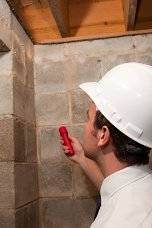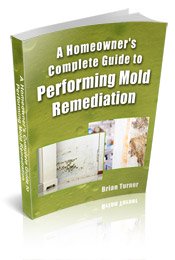Find a Mold Specialist Now
Click or Call, Toll-Free 24/7
Home Mold Inspection
How to perform an effective home mold inspection is something everyone ought to know how to do. The health consequences of a mold infestation that goes undetected for too long can be severe, especially for people who already have sensitive respiratory systems or suffer from compromised immune systems. Knowing the basics of mold inspection protocol can not only save you and your loved ones from a lot of discomfort, but possibly even save your lives.
How to know if you need a home mold inspection
While it is always a good idea to monitor your living space for signs of anything amiss, the presence of mold included, you definitely want to think more seriously about mold inspection protocol if excess moisture is a problem in your home for any reason, as mold spores need damp conditions in order to flourish and multiply. If you live in an area where high levels of humidity are experienced as a rule, you should always be on the lookout for mold growth. You will definitely want to look things over if you’ve recently had any recent plumbing problems or issues with water seepage as well.
How to perform a home mold inspection

Thorough mold inspection protocol always starts with a comprehensive visual survey of your living space in order to assess your overall situation. Look for dark patches of mildew-like growth in areas of your home where moisture is often present. Be sure to check around window openings, underneath sinks, around washing machines, near water lines, and in bathing areas. If you have a basement or attic area that tends to be on the damp side, make sure you check all the nooks and crannies there as well.
Although mold is often slimy and damp, it’s important to note that you may find dried patches of mold as well. However, don’t make the mistake of thinking dried mold can’t hurt you. Never pick or scratch at dry mold patches. The spores they contain are extremely dangerous should they become airborne.
Should you fail to find any visual signs of mold in your home, but still have reason to suspect a problem, take your home mold inspection to the next level. Have you or your family smelled any mildew-like or stale odors coming out of your air vents? Mold can hide in places like that as well and cause especially troublesome problems, as it’s possible for spores to be easily distributed all over the house this way.
How to be sure your mold inspection protocol was thorough enough
After you’ve assessed your home yourself, it’s always a good idea to enlist the advice of a professional mold specialist to be sure you’ve covered all the bases. While performance of a regular home mold inspection routine is helpful and advisable, it’s always possible that you might have missed something, especially if the problem has yet to become really severe. A professional will be able to assess your living space thoroughly enough to identify even the slightest presence of mold.
Your initial consultation and home assessment is free, so there’s really no reason to pass up the opportunity to speak with an expert. Should you turn out to have an issue with mold, you can then choose to have it dealt with professionally or receive free expert advice on how to safely and thoroughly eliminate the mold yourself. The mold specialist can also go over your mold inspection protocol routine with you and give you additional tips on how you can be as thorough as possible in the future.
You can follow this link to get a free listing of qualified Mold Removal Professionals in your area. The sooner you get in touch with someone whose business it is to know mold inside and out, the sooner you and your family can rest assured that your home is the safe haven that it honestly should be.
Return From Home Mold Inspection To Our Mold In Homes Page
Black Mold Health Symptoms Home Page





